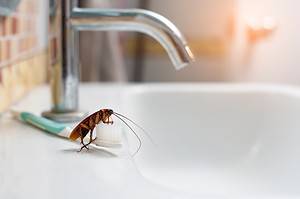Keeping roaches out of your home can be a persistent challenge thanks to their resilient nature and adaptable behavior. These tenacious little critters are drawn to the enticing scents of food, moisture, and scented home decor. Maintaining cleanliness is vital, as even small crumbs or spills can serve as invitations. Addressing water leaks promptly and ensuring proper ventilation can also help reduce the appeal of your home to roaches. A comprehensive, consistent approach is essential in the ongoing battle to maintain a roach-free environment. Above all, roaches are attracted to certain scents. Discover the seven scents that attract roaches like magnets!

Keeping roaches out of your home can be a persistent challenge due to their resilient nature.
©iStock.com/Wi6995
What is a Roach?
A roach, also known as a cockroach, is an insect. Insects are a class of arthropods with a body in three segments (head, thorax, and abdomen), three pairs of legs, and typically one or two pairs of wings. Cockroaches belong to the order Blattodea. They are among the most primitive and ancient insects, having been around for hundreds of millions of years.
Periplaneta americana, commonly known as the American cockroach, is a large and globally distributed species of cockroach. These reddish-brown insects are one of the larger cockroach species, reaching lengths of 1 to 2 inches (2.5 to 5 cm). American cockroaches commonly reside in warm and moist environments such as sewers, basements, and other dark, damp places. They also infest buildings, particularly in urban areas. American cockroaches are nocturnal and can fly short distances. They are omnivores, feeding on a variety of organic materials. American cockroaches are pests due to their potential to contaminate food and spread disease.

reaches lengths of 1 to 2 inches (2.5 to 5 cm).
©iStock.com/ViniSouza128
Scent Detectors
Roaches have a well-developed sense of smell, which helps them detect and locate food, water, and suitable habitats. Their sense of smell is not as refined as some other insects, but it is still quite effective. Roaches have tiny, sensitive hairs called sensilla (singularly sensillum) on their antennae and other parts of their bodies that are instrumental in detecting odors. These sensilla contain specialized cells that detect chemical molecules in the air, allowing roaches to sense and respond to various scents. Their sense of smell helps them find food sources and avoid potential dangers.
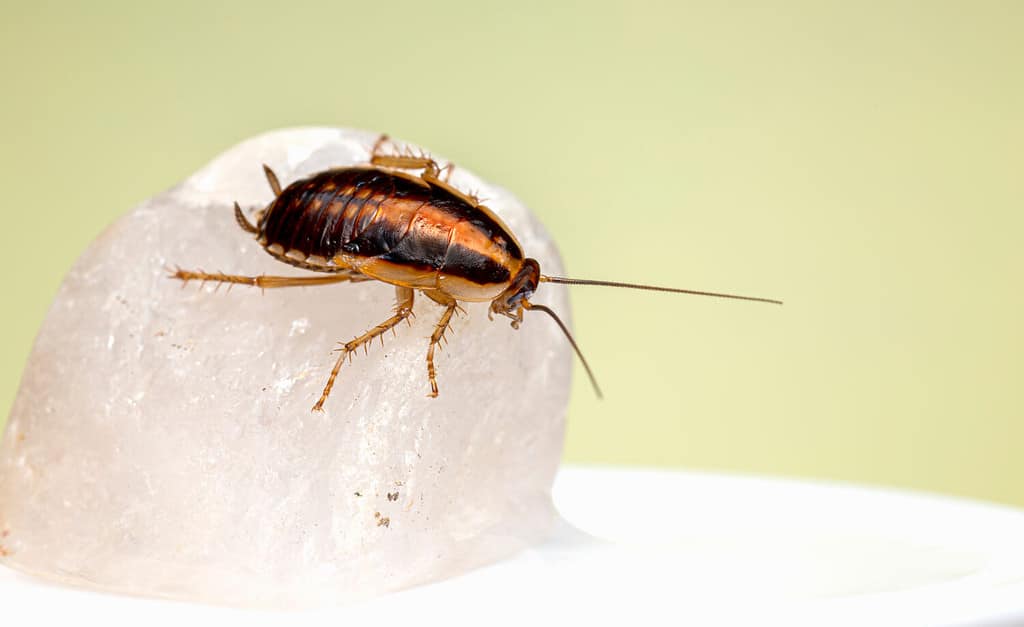
Roaches have tiny, sensitive hairs called sensilla that are instrumental in detecting odors.
©Erik Karits/Shutterstock.com
1. Food
Roaches are opportunistic scavengers and will consume a wide range of foods. Their favorite menu items are often high in carbohydrates, sugars, and proteins. Research has shown that roaches love starchy foods like bread, pasta, and cereal. Sweet foods such as sugary snacks, candies, and syrups also appeal to roaches, along with greasy and oily foods! Foods with a high protein content, including meats and cheese also attract roaches like magnets. Sugary and fermented beverages, like soda and alcohol, can be appealing to cockroaches, as well. While they are less likely to be drawn to fresh fruits and vegetables, they will eat overripe or decaying produce. Best practices suggest storing food in airtight containers and cleaning up food crumbs and debris immediately.

Much like humans, roaches favor foods loaded with carbohydrates, sugars, and proteins.
©Nataliya Arzamasova/Shutterstock.com
2. Moisture
You might not think moisture has a scent. But take a second to conjure the scent of grandma’s basement or the crawlspace of your home. Moisture is often described as being slightly musty, earthy, or dank. It’s a combination of odors that arise when organic materials begin to break down due to the presence of water or humidity. You might associate the scent of moisture with areas that are not well-ventilated such as basements and bathrooms. Roaches enjoy damp, humid environments. They hang around areas with water sources, so any scents associated with moisture can be appealing to them. To reduce damp spaces in your home, address leaks promptly and properly ventilate crawl spaces, attics, and bathrooms. Store items in sealed containers.
Outdoors, clean out gutters and downspouts regularly to ensure proper drainage away from your home’s foundation. Be sure that your yard’s landscaping encourages proper water flow away from your home.
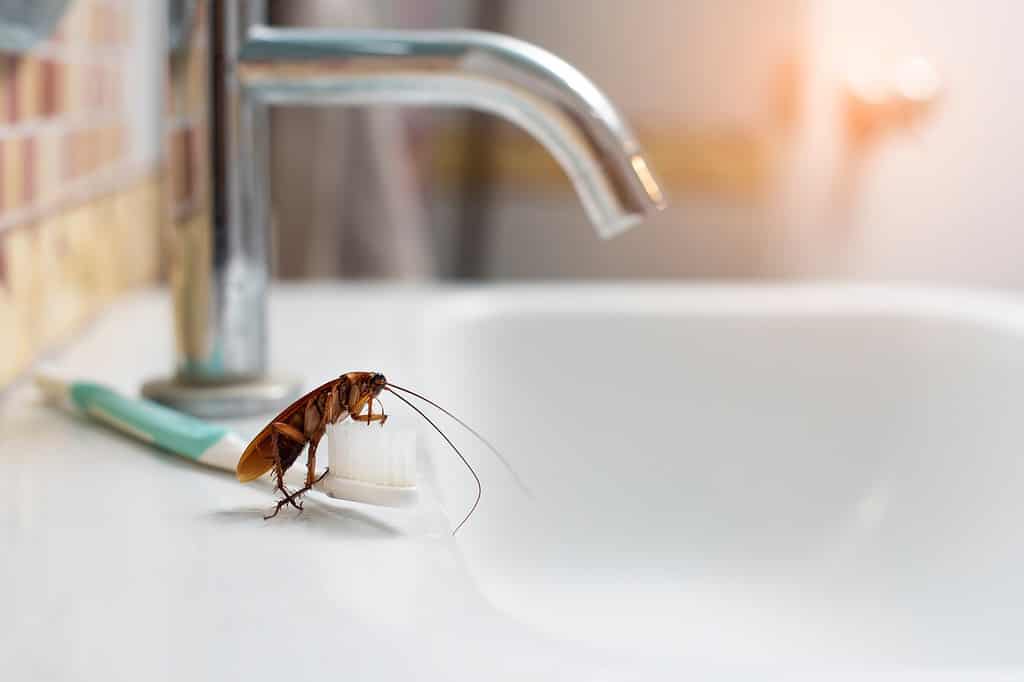
To reduce damp spaces in your home, properly ventilate crawl spaces, attics, and bathrooms.
©Pasonglit Junuan/Shutterstock.com
3. Darkness
Roaches prefer dark and secluded areas. Though darkness itself doesn’t emit a scent, certain environments have odors that are associated with darkness. Similar to areas with moisture, dark spaces often emit musty or earthy odors due to the lack of light and limited airflow. These factors contribute to the accumulation of moisture and the breakdown of organic materials. Scents that indicate the presence of such spaces attract roaches.

Though darkness itself doesn’t emit a scent, certain environments have odors associated with darkness.
©nathamag11/iStock / Getty Images Plus via Getty Images
4. Cardboard
Roaches are scavengers that consume a wide range of organic materials, including the cellulose found in paper and cardboard. Cardboard and paper are porous materials that readily absorb and retain moisture. Moist environments are inviting to roaches. Cardboard and paper also absorb and retain scents from food and other sources making them even more attractive to roaches. To minimize the attraction of roaches to cardboard and paper, it’s important to keep these materials clean and dry. Store cardboard boxes and paper products in dry areas. And toss the Amazon boxes as soon as you open them. Use plastic containers or sealable bags for long-term storage.
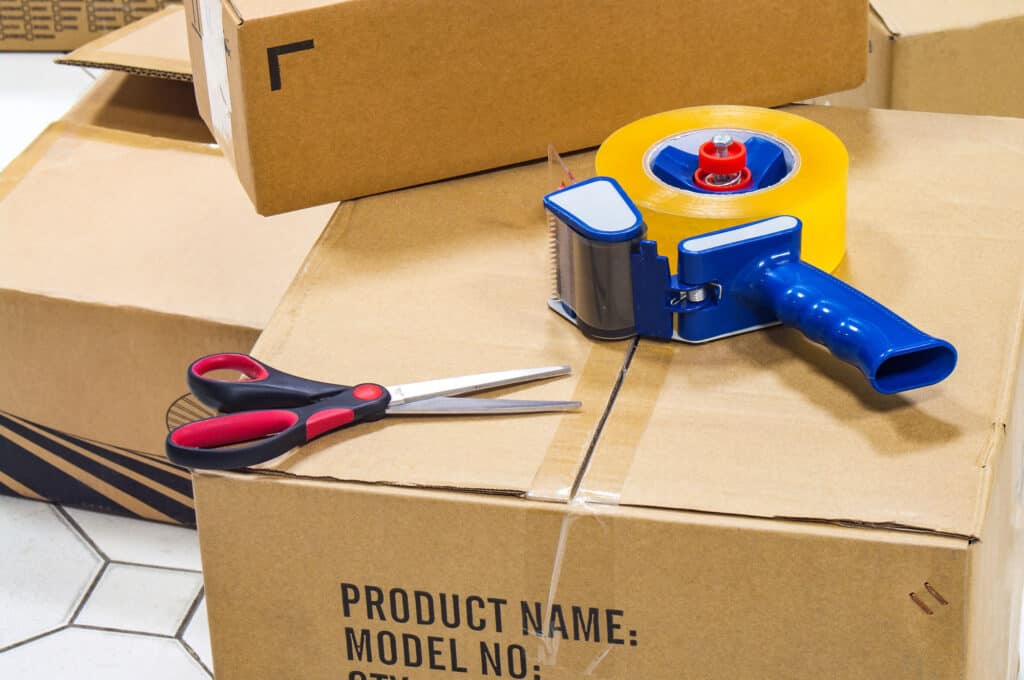
Cardboard absorbs and retains scents from food and other sources making them even more attractive.
©iStock.com/Andrey Deryabin
5. Decaying Matter
The scent of decaying matter is slightly sour or pungent. It’s often due to a mix of organic compounds breaking down and releasing gases as part of the decomposition process. The scent can vary based on the type of material, the stage of decay, and the environmental conditions. In some cases, the scent might be reminiscent of damp, rotting vegetation or the familiar smell of compost piles. While the scent may not be pleasant to humans, it can attract scavenging insects. Roaches are drawn to the nutrient-rich substances produced during decomposition. This includes scents from trash and compost. Keeping a lid on the garbage can and the compost bin will help keep pesky roaches away.

Keeping a lid on the garbage can and the compost bin will help keep pesky roaches away.
©grandbrothers/Shutterstock.com
6. Pet Food
Roaches love the scent of pet food due to the food’s nutritional content and the strong odors it emits. Pet food contains a mix of carbohydrates, proteins, and fats that provide essential nutrients. Roaches are opportunistic scavengers that seek out food sources with a balanced nutrient profile.
Pet food, particularly wet or canned varieties, emits strong odors. Roaches have a well-developed sense of smell, and pet food scents can attract them from a distance. Wet pet food provides moisture, which is crucial for roaches’ survival. Pet food can serve as both a food and water source. Owners often leave pet food out in open bowls or containers, providing easy access for roaches. Once they find a consistent food source, they are likely to return. Storing pet food in sealed containers, and cleaning up spills promptly, will help deter roaches from infesting areas where there is pet food.

Pet food, particularly wet or canned varieties, emits strong odors.
©Jaromir Chalabala/Shutterstock.com
7. Scented Home Decor
Certain scented home products can inadvertently attract roaches, although the attraction is usually due to the nature of the scents rather than a deliberate design to attract roaches. We never see the unintended consequences coming. Some scented home products that might inadvertently attract roaches include scented candles, air fresheners, and cleaning products. This is especially true of those items with food or food-related scents. Scented products that contain natural fragrances derived from organic materials also attract roaches. Opt for scents that are less likely to mimic food or organic matter.
Store scented products in airtight containers to prevent the diffusion of the scent into the environment.
Clean areas where scented products are used to prevent the buildup of dust, residues, and crumbs that could continue to harbor the scent, attracting roaches. Good ventilation is key to keeping scents at a minimum. Proper sanitation, sealing entry points, and addressing conducive conditions are more effective ways to prevent roaches from entering your home. If you’re dealing with a roach infestation, the use of roach baits and traps or seeking the expertise of a pest control professional may be necessary.
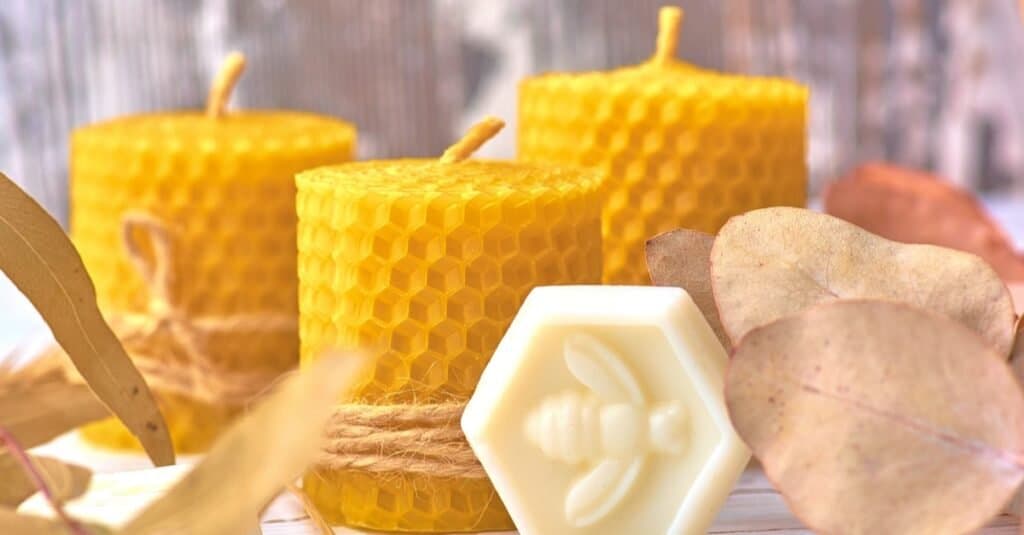
Decorative candles with a honey aroma just might attract roaches!
©Morgit Dziuban/Shutterstock.com
The photo featured at the top of this post is © iStock.com/Wi6995
Thank you for reading! Have some feedback for us? Contact the AZ Animals editorial team.





